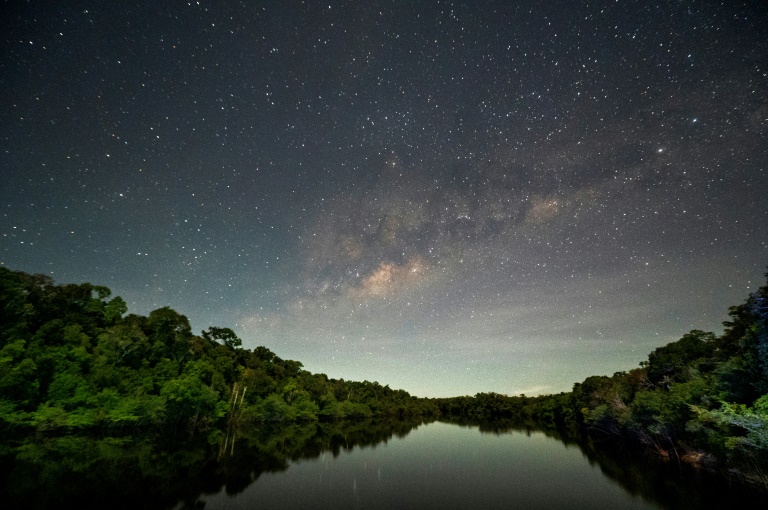The Amazon, which spreads across nine countries, is the largest of only a handful of primary rainforests left in the world. It has more plant and animal species than any other place on Earth and is home to more Indigenous peoples than anywhere else
Brazil’s president-elect Luiz Inacio Lula da Silva is facing a tough battle to halt the destruction of the Amazon, with the weight of global expectation on his shoulders before he even takes office.
“The Amazon is so damaged, so deforested. We need a plan,” said Luciana Gatti of Brazil’s national space agency, which tracks the health of the rainforest.
Lula, who was also president between 2003 and 2010, has acknowledged the “immense” challenges awaiting him after his election on Sunday, citing a hunger crisis, the economy, and bitter political division.
These issues pushed the Amazon to the periphery during the election campaign, but the 77-year-old knows all eyes are on Brazil, saying the country is “ready to reclaim its place in the fight against the climate crisis, especially the Amazon.”
Lula, who will attend the upcoming COP27 climate meeting in Egypt, has vowed to “fight for zero deforestation” and “resume monitoring and vigilance in the Amazon.”
“Brazil and the planet need a living Amazon,” he said after his narrow victory over outgoing right-wing President Jair Bolsonaro.
However, Lula is facing a hostile Congress packed with Bolsonaro allies, and inherits environmental protection agencies whose budgets and security operations were slashed by the outgoing president.
“It is not going to be an easy road ahead,” Sarah Shenker of Indigenous-rights group Survival International told AFP. “There is so much to do.”
She said Lula would have to “rebuild the government agencies responsible for protecting Indigenous territories, many of which have been completely overridden by political appointees” under Bolsonaro.
– A long to-do list –
Foreign allies were quick to mention environmental issues in their messages of congratulation to Lula.
Notably, Germany and Norway announced they would resume aid for Amazon protection that they had halted due to Bolsonaro’s approach to deforestation.
So, where to start?
“Lula will have to act firmly from the beginning to pretty much reshape federal government operations in the Amazon region,” said Suely Araujo, a senior specialist of Brazil’s Climate Observatory and former president of IBAMA, the government’s main environmental agency.
Shenker said IBAMA and the Brazilian indigenous agency FUNAI need “financial resources and political will” after being sidelined by Bolsonaro, who saw such groups as impeding economic progress by slowing permits for timber, farming, and mining.
“He can also put a stop to the really dangerous, genocidal proposals that are being debated in Congress,” she said referring to a bill aimed at allowing more mining on Indigenous lands.
Araujo urged Lula to “immediately resume climate policy, which was completely drained under the Bolsonaro government.”
She said Brazil had become a “pariah” in climate negotiations and should get its national policy in line with the 2015 Paris Agreement.
– ‘A lawless place’ –
The Amazon, which spreads across nine countries, is the largest of only a handful of primary rainforests left in the world. It has more plant and animal species than any other place on Earth and is home to more Indigenous peoples than anywhere else. More than 100 uncontacted tribes live in its depths.
Fires and massive deforestation in the Amazon are not new problems, and the situation was still dire under Lula, who nevertheless managed to bring deforestation to historic lows at the end of his time in office in 2010.
Growing concern about the climate crisis coincided with massive Amazon fires in 2019. With Bolsonaro indifferent, a global outcry ensued.
Since he took office four years ago, deforestation has increased 75 percent compared to the previous decade.
Research shows that damaged parts of the Amazon now emit more carbon than they absorb.
“The Bolsonaro government represents the deforestation of 50,000 square kilometres,” an area the size of Slovakia, said the space agency’s Gatti, who carried out the atmospheric study.
She suggests declaring a “state of emergency” in the Amazon, and beginning a program of reforestation in the worst-affected section of the forest, which Brazilian scientists will propose at COP27.
“We need to save this part, this needs to be our priority.”
Gatti noted that international trade in beef, soy, and timber, was the biggest driver of deforestation and pointed out a certain “hypocrisy” on the part of countries which “are buying the products of the Amazon’s destruction.”
She said that just returning the Amazon to the state it was in before Bolsonaro will be a battle.
“Right now the Amazon is a lawless place.”









